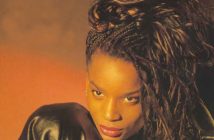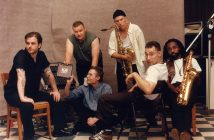Despite a band name that sounds like a fashion column for a gossip magazine – or even worse, a new Gok Wan tv show – How To Dress Well is pretty out-of-the-box kind of music.
Indeed, debut album Love Remains was a hybrid of late 80s and 90s R&B and atmospheric ethereal guitar landscapes; it’s tracks hum along with layers of distorted guitar, multiple sample loops and indistinct vocals in a lo-fi paradise. So lo-fi, in fact, that the music sort of whispers at you like it was home-recorded by a ghost.
The result was that it was an LP only likely to be listened to by tumblr-having pitchfork-reading hipsters. God knows why though; HTDW’s sound is that of James Blake, xx, Weeknd hybrid – all of which who have had relative mainstream success. And as alternative music goes, Love Remains is difficult to dislike, easy to listen to – even as just background music – and was an album of intense and fragile beauty.
Luckily, album number two – titled Total Loss – is no different. Tom Krell’s project has picked up exactly where he left off, producing an album of experiment R&B with his falsetto soaring over songs full of reverb haunting melodies.
Yet, I lied. This is different from Love Remains; that was, after all, an album about love. Total Loss – if you hadn’t guess from the album’s title or it’s grave-looking album art – is about death. “Dear mama, did you try to tell me everything was gonna be safe” is a line on the gospel-sounding opening track ‘When I Was In Trouble’; a testament to Krell’s own mother.
The fact that such a theme is prevalent in the album can clearly be heard with ending track ‘Ocean Floor For Everything’ having a mournful quality of gothic despair. ‘Set It Right’ also reaches the same aching pain in a soundscape of electro loops and piano; ‘World I Need You’ does it with a Sigur Ros-based post-rock feel. It’s frosty softness and pain is felt in every second of the album.
Thats not the only difference either. For many songs, the hiss of the lo-fi has been replaced with the whirl of sharp sleak production. No more obviously is this seen then ‘& It Was U’ – no shoegaze guitar, no lo-fi hiss here.
The R&B influence is screaming out of every pore with this song with a quicken rhythm pacing through the song whilst Krell’s smooth vocals float through the song. It’s a song that shows why Krell is placed with the likes of Frank Ocean in the DIY ‘intricate’ R&B that is become more and more popular by the minute. It has even began to get its own sub-genre; PBR&B – which essentially means ‘hipster’ R&B.
In reality, the top 40 feel of the song means it sticks out like a sore thumb on the album as a whole; and, in many ways, is one of the weakest songs. ‘Running Back’ similarly is far too R&B-laced with Michael Jackson-esque bleats and a funky swing maintained throughout the track’s entire length.
Such a sound will please some fans, but for many its means the albums loses it tender and fractured closeness that Love Remains prospered with. Indeed, it is songs like ‘Cold Nites’ – where both his R&B and etheral sound are plain to see – where Krell reaches his peak. Echos and layers of sound taking you on a dreamy spectral journey, whilst a hand-clapping beat overlaps in the background. ‘Struggle’ also has this blend perfectly balanced with its dark soaring electro wave reaching the closeness of etheral kings, Salem – albeit a more ambient style – whilst post-dubstep electronic jitters to boot.
The genius of How To Dress Well is that it sounds like music you could record on your laptop at home; yet, 99.9% of people wouldn’t come close to producing the emotive intensity nor artistic quality of Krell. For him, its just not forced. True, How To Dress Well is both extremely hipster and prentionous, but with a sophmore effort this good, it doesn’t matter one bit.
7/10

![Midge Ure on Legacy, Live Aid, and his upcoming ‘Catalogue’ tour: ‘The idea that there could be an [AI] Ultravox in 40/50 years from now is terrifying’](https://theedgesusu.co.uk/wp-content/uploads/2024/03/download-214x140.jpg)

